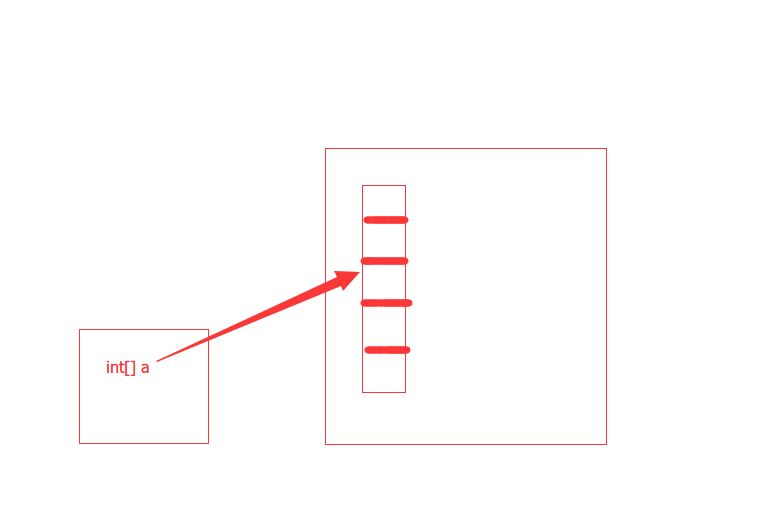概念:
数组可以看成是多个相同类型数据的集合, 对这些数据的统一管理
数组的变量是引用类型, 数组也本身也是个对象,
数组中的每个元素相当于该对象的成员变量
数组的元素可以是任何的数据类型, 包括基本数据类型和引用类型
声明方式:
类型[ ] 变量名 = new 类型[长度] 一般写这种
或者
类型 变量名[ ] = new 类型[长度]
int[ ] a = new int [10];
double[ ] d;
String[ ] s;
Person[ ] p;
声明数组时要使用 new 关键字, new表示在空间上新开辟一个空间用来存放变量
1, 必须声明数组的长度, int[ ] a = new int [5];
2, 也可以直接定义数组的内容 int[ ] a = { 1, 2, 3 }
3, 数组的长度一旦被定义, 则不可再变

遍历和初始化(求int数组的和)
① 静态初始化 / 动态初始化 静态是定义完数组以后直接给值,动态是先定义长度
例: int[ ] arr = new int[10];
int[ ] arr2; 只声明了变量,什么也不指向
double[ ] d = new double[10];
int[ ] arr3 = {4,3,1};
② 基础类型
③ 引用类型
④ 二维数组的初始化和定义: int[ ][ ] aa = new int[3][ ];
练习题:500人,第三个淘汰
package test;
public class Count3Quit {
public static void main(String[] args) {
boolean[] persons = new boolean[500]; 定义500人的数组
for (int i = 0; i < persons.length; i++) {
persons[i] = true; 一开始500人都在队伍
}
int index = 0; // 记录数到整个队伍中的第几个
int count = 0; // 123,123,123
int len = persons.length; // 队伍中还剩下多少人
while (len != 1) { 只要不是剩一个人就一直循环
if (persons[index]) {
count++;
if (count == 3) { 数到第三个的时候
persons[index] = false; 踢出去
count = 0;
len--;
}
}
index++; 如果等于队伍的长度的话变0重新数
if (index == persons.length) {
index = 0;
}
}
for (int i = 0; i < persons.length; i++) {
if (persons[i]) {
System.out.println(i);
}
}
}
}
冒泡排序 :
public class Test4 {
public static void main(String[] args) {
int[] arr = { 1, 3, 6, 2, 0, 11, 17, 14, 4 };
bubbleSort(arr);
p(arr);
public static void bubbleSort(int[] arr) {
for (int i = 0; i < arr.length; i++) {
for (int j = 0; j < arr.length - i - 1; j++) {
if (arr[j] > arr[j + 1]) {
int temp = arr[j];
arr[j] = arr[j + 1];
arr[j + 1] = temp;
}
}
}
}
public static void p(int[] arr) {
for (int i = 0; i < arr.length; i++) {
System.out.print(arr[i] + " ");
}
}
}